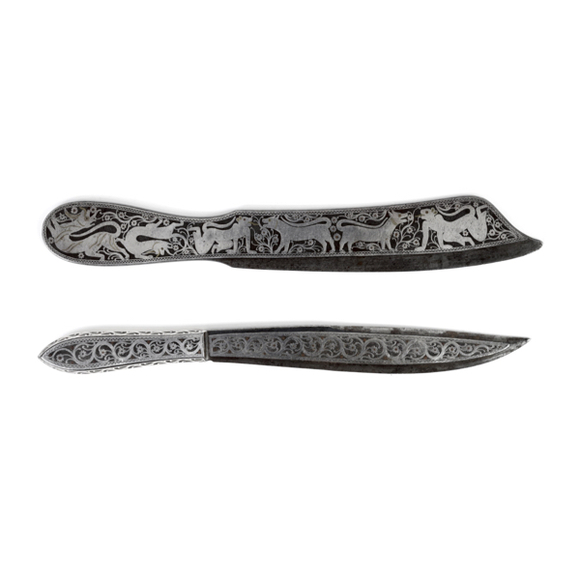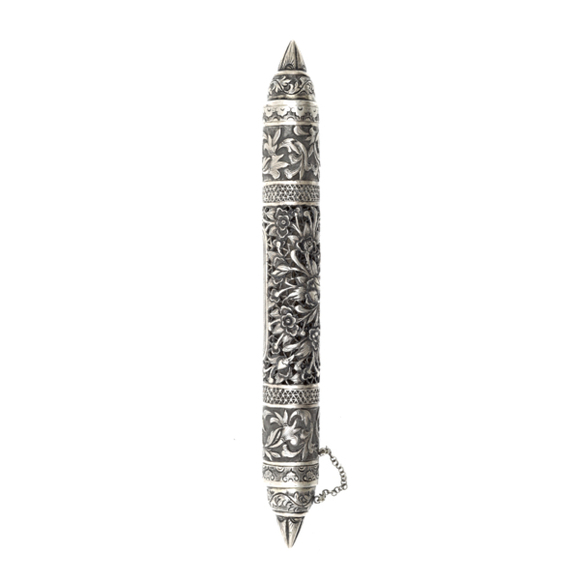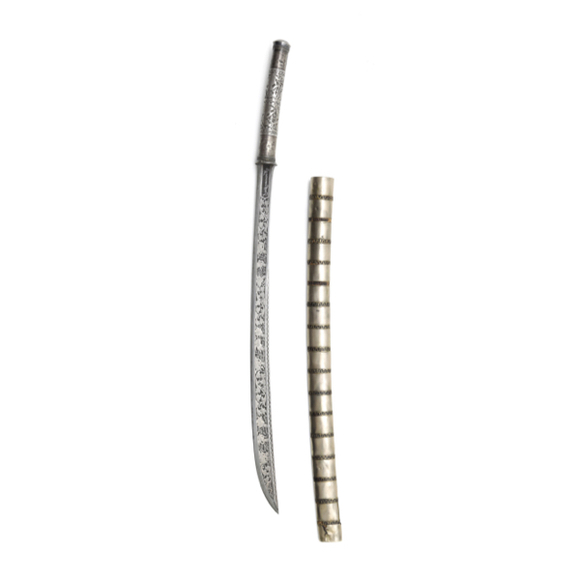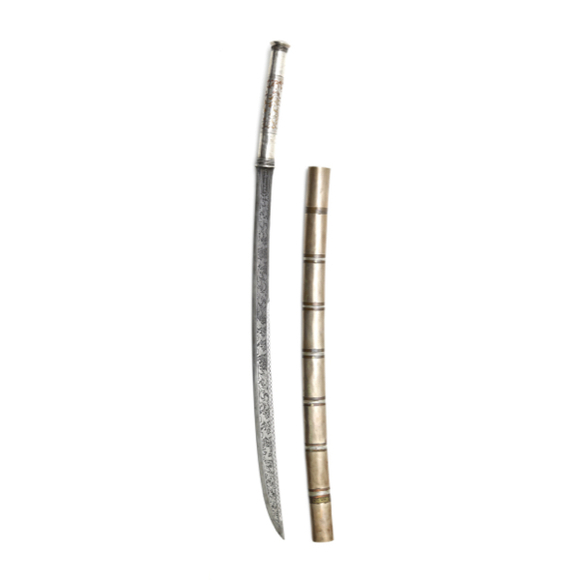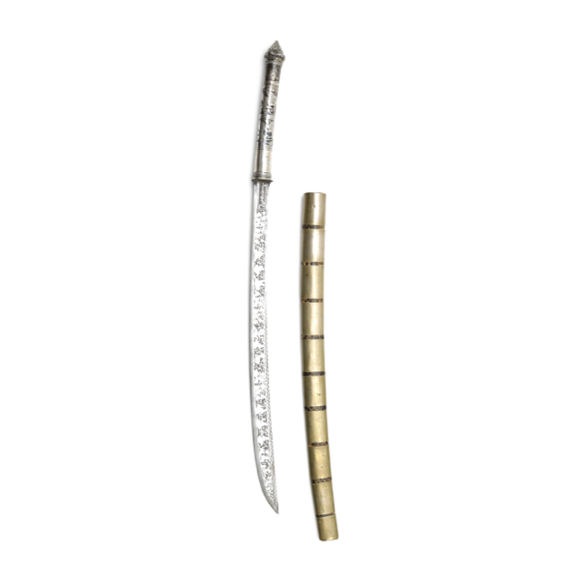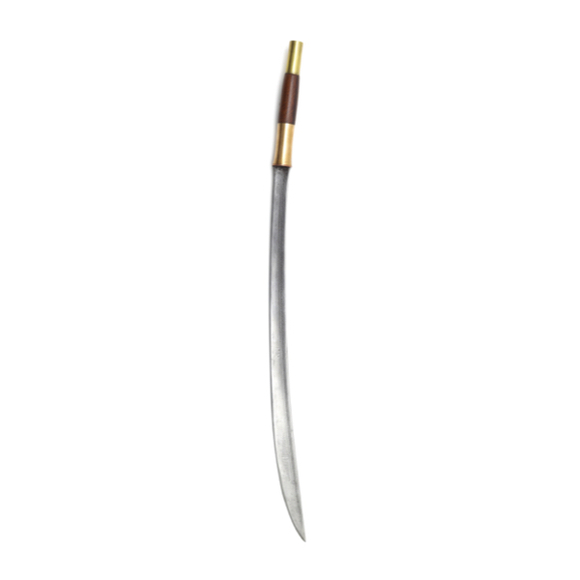Language: Burmese
Source: Period dictionaries
Description
Hlan (လှံ) is the Burmese word for spear; lance; javelin.1
The Burmese language does not make a distinction between the two, most likely because one and the same weapons was used for all three purposes as was the case in Yunnan. See suōbiāo (梭鏢).
Notes
1. Adoniram Judson; Judson's Burmese-English dictionary, revised and enlarged by Robert C. Stevenson. Government Printing, Rangoon, Burma, 1893. Available on archive.org.
Antique examples
Burmese spears are very rare, I have only seen two that I could positively identify as Burmese so far. I have managed to purchase one of them.
It has a head lavishly decorared with silver overlay, the style and workmanship of which suggests it was made in Mindan village.
Most Burmese spears were probably much more simple affairs, and therefore rarely collected.

A rare Burmese spear, called hlan.
Author's collection.
In period sources
"On arriving at the foot of the work, after forcing the way through a capital abatis, the entrance was found barred up, and the height of the work, and the want of ladders, prevented escalading: The men for some time were, therefore, exposed to the assaults of the enemy, who threw out spears, and tried every effort to drive us off." 1
-Thomas Abercromby Trant, 1827.
"Swords and spears were also found in great quantity at Joazong, but there were no cannon." 2
-Thomas Abercromby Trant, 1827.
"A Burman soldier’s dress, though plain, is far from unbecoming. A black glazed jacket forms the principal vesture. A silk wrapper is tied round his loins, leaving the limbs bare. Over the shoulder is thrown a silk scarf,and the hair, tied in a knot on the top of the head, is encircled by a red fillet. A sword slung over the arm, the spear, musket, powder-horn, and shot-pouch, finish his equipment." 3
-Thomas Abercromby Trant, 1827.
"The advanced posts of the army under Shumba Woonghee, had now appeared on the banks of the Rangoon River, seven miles from Rangoon."
"The carnage was very great, at least five hundred men being slain in the first stockade, and amongt them was Shumbah Woonghee."
"In this stockade was a battery of nine small guns, and ranged in a row behind, wore the Burman colours. They were made of red silk, swallow-tailed, and having the figure of a Braminy goose in the centre, and when furled, were bound round with green leaves instead of cases. A great many stand of arms were captured and destroyed, and many handsome spears, the shafts headed with chased silver, swords with gold and silver handles and scabbards silver caps, and even the Tsaloeh or gold chain of nine links, worn by the Woonghee became the property of the soldiers. The latter ornament was afterwards sold for six hundred and fifty rupees." 4
-Thomas Abercromby Trant, July 1824.
Notes
1. Thomas Abercromby Trant; Two Years In Ava (1824-1826). William Clowes, London. 1827. Page 44.
2. Ibid. Page 48.
3. Ibid. Page 63.
4. Ibid. Pages 65-69.

